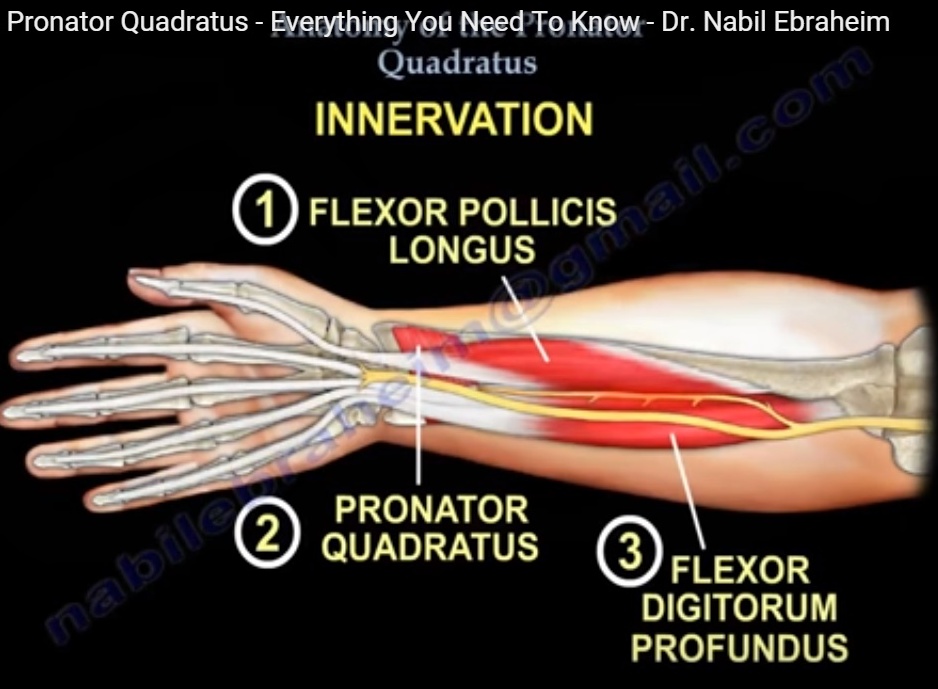Courtesy: Prof Nabile Ebraheim, University of Toledo, Ohio, USA
Anatomy of Pronator Quadratus
- it is one of the deep compartment muscle of volar foream that helps to pronates forearm.
Origin:
- originates from distal fourth of anterior surface of ulna.
Insertion:
- Inserts into distal fourth of the anterior surface of radius.
Nerve supply:
- anterior interosseous nerve which is a branch of median nerve.
Functions
- Pronation of forearm
- Deep fibers of pronator quadratus binds radius and ulna together.
Test for pronator quadratus function
- It can be tested with elbow held in flexion to neutralize the humeral head of pronator teres muscle.
- Pronation of the forearm is then tested against resistance.
Clinical significance
- Distal radial fractures in children that cannot be reduced. Usually the inability to reduce the fracture is due to the reduction being blocked by the periosteum of pronator quadratus muscle.
- Pronator quadratus muscle must be retracted in order to reach the fracture of the distal radius for plate fixation.
- Flexor pollicus longus tendon rupture associated with volar plating can be prevented by restoring the pronator quadratus to its position and covering the plate.
Parona space:
- Potential space for spreading infection between hand and forearm. Acute compartment syndrome of forearm may occur secondary to infection within parona space. Parona space facilitates communication between radial and ulnar bursa.
Boundaries of parona space
- Dorsal-pronator quadratus
- Volar-flexor tendons
- Ulnar side-flexor carpi ulnaris
- Radial side-flexor pollicis longus
Radial bursa and flexor sheath of the thumb are continuous. Ulnar bursa and flexor sheath of small finger are continuous. 50% of the radial and ulnar bursa communicates at level of wrist . Distal infection can extend to the parona space. infection of one finger may lead to direct infection of the sheath on opposite side of hand. Infection may cause horse shoe abscess.
Pronator syndrome:
- Compression of median nerve at the level of elbow.
Carpal tunnel syndrome is compression of median nerve at wrist which is the most common nerve entrapment.

Dear Professor
Very useful
Thank you